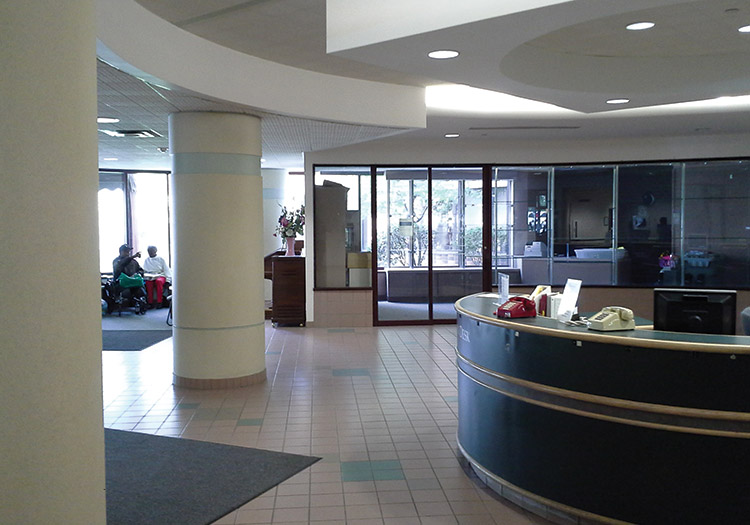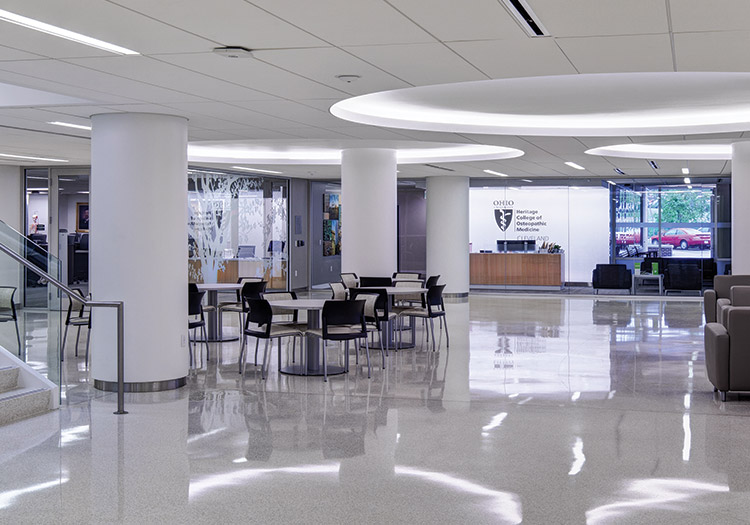How to Succeed in Higher Education Renovations
Welcome to the renovation renaissance of higher education! It is an era whose timely philosophy has generated what some have called the new “new” for colleges and universities, and is an approach born of diverse influences. While not a comprehensive list, we see these influences in the growing competition for students seeking world class campus facilities during a time of diminishing institutional revenue (N.Y. Times, Building a Showcase Campus, Using an I.O.U., December 2012), sustainability goals with campus-wide mandates, and austerity pressures driven by a weakened U.S. economy. It’s an exciting opportunity for architects and university administrators alike to showcase innovative thinking and the increased collaboration required to realize projects under restrictive site conditions and building infrastructure - often with construction in occupied buildings. Implementing new design technologies in existing buildings brings freshly realized value to the structures that have provided the historical growth of many institutions, and highlights a commitment to the responsible reuse of building materials already in place.
Paving the way for a successful renovation project will take greater up-front effort in planning. The right partners in your design and construction teams will help facilitate the process by providing experience and the necessary collaborative spirit to make your job easier. What follows are our big ideas to set you forth with strategic purpose.
Be a Visible Leader
Set your expectations of teamwork at the onset. Make your vision for success a collective vision involving your design team, construction manager, facility manager, and academic leader. Navigating the disruption to the building requires cooperation from each of these parties and by establishing ownership of the process amongst us, we all become facilitators of the vision with a share of the responsibility in bringing it forward. Your kick-off meeting should clearly define the responsibilities of each team member and provide the framework illustrating the importance of their individual contribution. These relationships built early on will have great impact over the duration of the project, either setting up roadblocks to efficient progress or facilitating a process-driven collective effort toward meeting all your project goals.
Unless your building has been sitting vacant, the renovation process will be disruptive to the people on campus who matter most – your educators, your researchers, and your students. Help them understand the value of the project by providing visible leadership that communicates the end vision and a thoughtful plan for the process. Invite them to participate in a town-hall type setting that provides them opportunity to share in the excitement of the project and ask questions about the impact to their workflow. Your architect, engineers, and construction manager are valuable partners in this meeting and can provide answers to technical questions that may arise. Simply offering the outlet for them to be heard goes a long way in illustrating that they are at the forefront of your concerns.
Plan It
Determine if your building will need to remain occupied during the construction period. While temporarily relocating may seem like a hassle and an unnecessary expense, the benefits of being able to vacate the building are many.Construction is noisy, dirty, and requires you to share your space with labor crews. This decision has the single-most impact on the trajectory of your construction process.
1. Option 1 – Vacate the Building.
Select your swing space. You will need to evaluate the capacity and infrastructure of the space available. Computer stations need power; laboratories need plumbing and exhaust; book stacks need enhanced structural capacity. If you can accommodate all your needs, budget the move and proceed knowing you’ve saved yourself much stress in the coming months. If costs exceed what you are able to cover as a purchase order it can be run through your construction contract.
2. Option 2 – Maintain Operations in Your Building During Construction.
Depending on the complexity of the academic work being done in your building, this may include a combination of night work and small-scale short-term relocations conducted in phases, with temporary swing space that allows for uninterrupted construction in areas while users work elsewhere. Often, this is accomplished through use of a designated area within the building.

Understanding the costs of phased work in occupied buildings is critical to managing your budget. Second and third shift construction work will require a premium paid for labor and may extend the construction schedule as time will need to be budgeted for daily prep and the clean-up that allows your users to effectively use their space during the day. Even with daily clean-up, the migration of some construction dust is unavoidable and will be noticed by your occupants. Security is also a factor to consider as contractors must be able to move through the areas scheduled for construction. Items of high cost and personal value should be taken off-site as a safeguard against incidental damage and to avoid accusations of impropriety.
Your design team can help you forecast the extent of the imposition on daily life in your building. Renovation of one space might have impact on other areas depending on the nature of the work and where connections to basic components of the building systems are located. Electrical, mechanical, and plumbing systems require access to existing components above ceilings and within walls that may require selective demolition in neighboring rooms to complete new connections. Utility shut-downs and work requiring cranes will need to be carefully scheduled as these activities temporarily limit access to and services within the building.
Know Your Needs
Determine, and then share your academic needs. Work closely with the dean or department head to map out exam schedules or other events planned to take place over the construction period. Special requirements for particular research projects can often be accommodated when planned for. Highlight extended breaks in the academic calendar so that construction can be maximized during these periods. These limitations on work hours and milestone dates should be communicated to prospective bidders so that any associated costs can be captured up front and change orders to meet these needs are avoided.
OU HCOM
DesignGroup recently completed 60,000 SF of renovation for the Ohio University Heritage College of Osteopathic Medicine, co-located with the Cleveland Clinic South Pointe Hospital in Warrensville Heights, Ohio. The opportunity to partner with the university in a renovation project allowed for a partial repurposing of the building, which would have otherwise likely been demolished. The project included redesign of the entry, posing the unique challenge of maintaining access for patients and staff to the hospital, which remained open during the construction period.


The project team included the architect and engineers, the construction manager, and project managers from both the college and the facility. The construction manager project supervisor was on site full time and was supplemented with frequent and regular visits by the rest of the project team. Key to the team’s effectiveness was that the owner’s project manager was both experienced in renovations and had the authority to make immediate decisions. She established a culture of teamwork and communication that translated to quick, decisive problem solving.
As the renovation project took form, it became apparent that infrastructure upgrades would be necessary and should start ahead of the renovation construction. An additional project was defined to upgrade building-wide electrical service, HVAC items, elevators, and to replace the roof. Using the same design and construction team, this project folded neatly into the overall schedule and represents the first phase of the work. The remaining construction was organized into two more phases designed around code compliant access routes that accommodated continuous workflow for both contractors and medical staff. Temporary barriers were built and moved around in response to the phasing that kept patients and staff protected from construction activities and contained construction dust and debris. Working in tandem with the contractor’s effort, the Owner provided special staff to assist their patients in navigating through the construction, placing a help desk at the entry to ensure that users of the hospital were guided to their destinations safely.

The HCOM project illustrates a team of designers, contractors, and owners coming together in mutual support of each other from design through construction. The renovation has been met with high praise from both the university and the hospital, and serves as a testament to the sometimes hidden opportunities of renovations.
An Investment in Values
Renovations offer a unique sense of accomplishment and social reward. Transformations to buildings whose design no longer meets the functional needs or preferred nature of a space are especially exciting to the people who inhabit them every day. Today’s strategies to maximize natural lighting and provide increasingly flexible spaces have shown to improve the productivity and well-being of those who live and work in spaces designed around them, and will have even greater impact for people who have occupied your space both before and after your renovation.
The success of your renovation project has value for your campus and beyond. With a focus on the worth of existing building stock, renovation projects celebrate our ingenuity, our willingness to work together to meet logistical challenges, and the values that contribute to an everlasting planet.

Jennifer Son, RA, NCARB // Project Manager
Jennifer has led successful collaborations with design teams, owners, and contractors to deliver projects that bring insightful design solutions on budget and on time. Jennifer is currently working on a renovation project for the Community Library of Sunbury in Sunbury, Ohio as well as the recently completed library renovation project for the University of Cincinnati.
